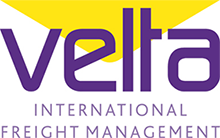
For all UK imports and exports Customs Commodity Codes are used to ensure the correct declaration of the goods.
A central database utilised across the EU, Commodity Codes are generally formed of ten numbers, although for UK exports only the first eight digits are required, whilst, for certain goods, the codes include an additional four digits.This harmonised system is formatted, with the first two digits of the tariff code representative of the name of the trade tariff chapter, digits four to six apply to headings within the chapters and numbers nine and ten determine the duties.
The responsibility for providing correct Commodity Codes for the import and export of your goods is upon yourself. So let’s take a look at just why a Commodity Code is so important, and where you can go to ensure that you are providing the right code.
Why do you need a Commodity Code?
The correct declaration of goods enables you to ensure that you pay the right amount of tax and duties, and that you can take advantage of any Customs benefits where relevant, such as duty suspension or preferential duty rates.
Correctly declaring your goods also enables you to ensure that the transportation of your goods meets any applicable controls and regulations. Goods are easily identifiable through their Commodity Code, which means that, once the right code has been ascertained, you have clarity as to the correct paperwork that needs to be completed, and whether it is necessary to obtain any import or export licences. Depending on the product specification, you may also be liable to pay antidumping duties or excise for your goods.
It is imperative to ensure that you transport goods under the right Commodity Code and in the correct manner. Should your products be subject to inspections by Customs control teams in the country of import, incorrectly declared goods or goods without complete documentation, can be seized, delayed or destroyed, at a considerable cost to yourself.
Even if you are experienced in international trade, it is important to note that Customs regulations are continuously evolving so regulations and charges that are applicable to your goods are subject to change.
Where to find a Commodity Code
To find the relevant Commodity Code or codes relating to your products, firstly you should consult the Trade Tariff product classification guides. If you are unsure as to which code to use or want clarification that the tariff you have opted for is correct, it is possible to seek advice from HMRC by emailing them details of your products – what they are made from, use and function and how they are presented and packaged.
For complete assurance that you are utilising the right code you can apply for a Binding Tariff Information (BIT) ruling. A BIT is valid throughout the EU for a period of three years and provides legal certainty in advance that you are applying the correct classification code to your goods. Applications for a BIT are free of charge but it is worth noting that costs may be applicable to cover any testing or analysis required in establishing details of your product.
Now you know the importance of a Commodity Code in global trade, and where to find the right code for your products, it’s time to start trading!
Our experienced Customs team handles the clearance of goods on a daily basis, whilst our vast network within our operations team offer global transportation solutions via all modes, so if you need help with your shipments, please get in touch!
